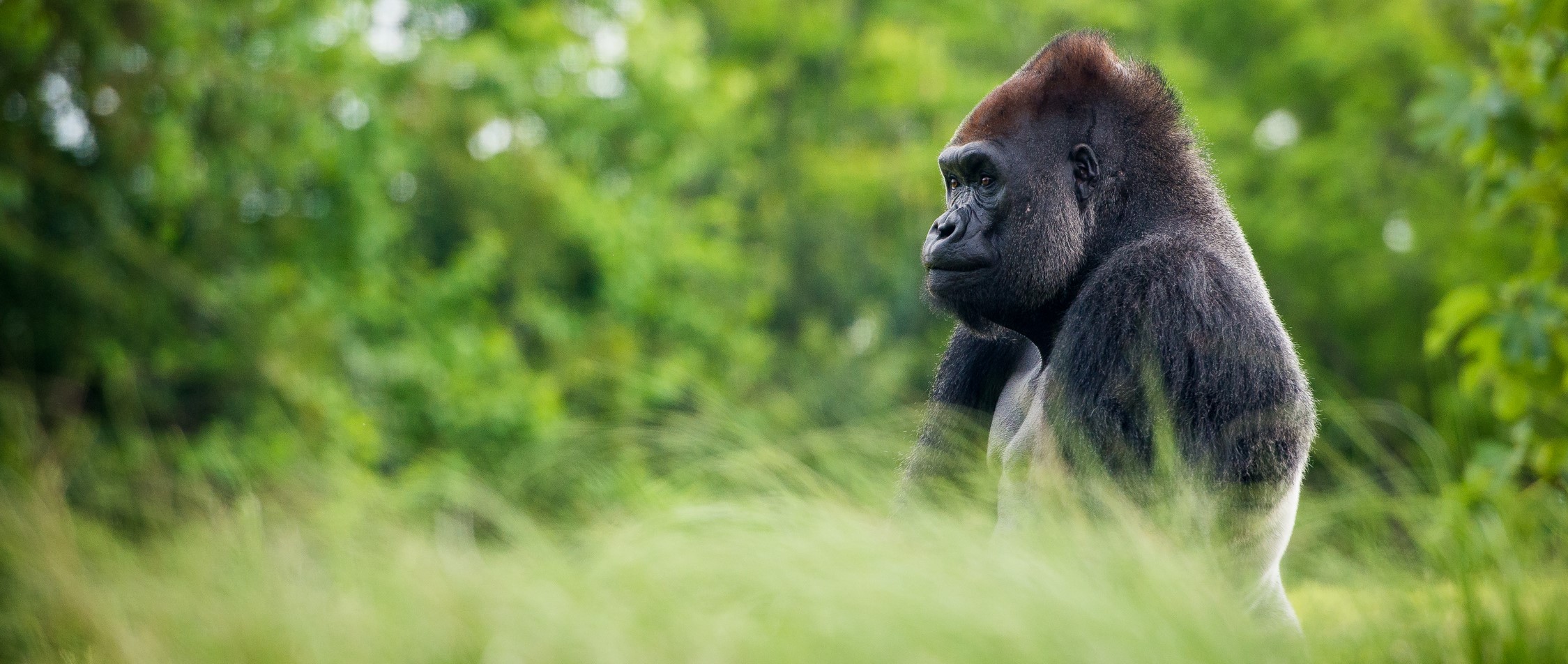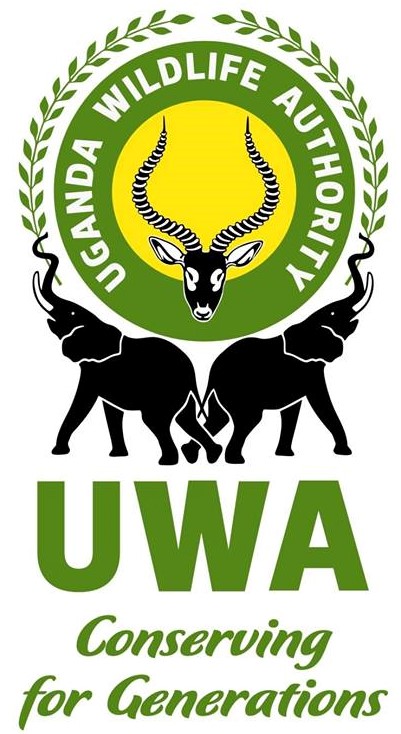
Gorillas are critically endangered
There are only about 100,000 gorillas left in the wild
↓

Gorillas are critically endangered
There are only about 100,000 gorillas left in the wild
↓

Uganda Wildlife Authority
Uganda Wildlife Authority (UWA) is a semi-autonomous government agency that conserves and manages Uganda’s wildlife
for the people of Uganda and the whole world. This agency was established in 1996 after the merger of the Uganda National
Parks and the Game Department, and the enactment of the Uganda Wildlife Statute, which became an Act in 2000. UWA is mandated
to ensure sustainable management of wildlife resources and supervise wildlife activities in Uganda both within and outside
the protected areas. Mgahinga Gorilla National Park is located in the southwestern Uganda on the border with Congo and Rwanda.
Covering an area of about 33.7 sq kilometers, the park is a habitat for man's closest, the mountain gorillas which roam about the
whole forest in search for food. This park is one of the few places in the world where the endangered mountain gorillas live and
it attracts people from different countries to come on Uganda Gorilla Safari.

World Wildlife Fund
Ecotourism provides opportunities for protecting gorillas and their forest homes and for helping the local people.
WWF has habituated gorilla groups to humans to develop opportunities for gorilla tourism. The organization has also trained trackers
and guides as part of the development of controlled tourism programs. WWF conducts research into the ecology, distribution and population
biology of gorillas. The organization also supports research into the spread of diseases between humans and gorillas and the natural spread
of diseases such as Ebola, as well as disease prevention. Park rangers are often the ones monitoring gorillas, and so WWF and our partners
have established a ranger-based monitoring program for mountain gorillas that documented a 17% increase in gorilla numbers in the Virunga
Mountains over a 14-year period. Habitat destruction is a concern for all four gorilla subspecies. WWF has worked to designate new protected
areas for gorillas in many places, like in Cameroon, where gorilla sanctuaries would provide havens for the rare cross river gorilla as well
as the western lowland gorilla. WWF also collaborates with local governments in the Congo Basin, timber companies and international lending
institutions to promote dialogue, encourage the best environmental practices and promote the adoption of forest certification standards.

International Gorilla Conservation Programme
The International Gorilla Conservation Programme (IGCP) was formed in 1991 as a coalition programme. The
IGCP coalition currently consists of Fauna & Flora International (FFI) and the World Wide Fund for Nature (WWF).The partnership also incorporates
the respective protected area authorities of the three countries in which IGCP works: the Rwanda Development Board (RDB), the Uganda Wildlife Authority
(UWA) and the Institut Congolais pour la Conservation de la Nature (ICCN).IGCP’s ultimate aim is to protect the afromontane forest and the many species
it harbours, by ensuring that it is managed sustainably and by tackling the threats to its survival. In order to achieve this goal, it has set itself
twin objectives: to reduce the threats to mountain gorillas and their forest habitat by creating widespread support for conservation among local communities,
interest groups and the general public; and to improve the protection of gorillas and their habitat by encouraging the relevant authorities to
adopt a consistent, collaborative approach to conservation policy and legislation throughout the region, grounded in conservation science.
There is a growing recognition among conservationists that a regional, ecosystem-based approach to management is crucial to effective long-term
species and habitat protection, particularly in areas of political instability. One of IGCP’s main objectives is to increase collaboration between
the protected area authorities and their partners in the region. The programme provides a mechanism for the respective countries to develop a
regional approach to the conservation of a shared habitat.

Wildlife Conservation Society
WCS's goal is to conserve the world's largest wild places in 16 priority regions, home to more than 50% of the world's
biodiversity.This is outlined in our 2020 strategy, which positions WCS to maintain its historic focus on the protection of species while developing an
ambitious plan to engage with a rapidly changing world.The challenges are greater than ever, but with the focus, dedication, and passion of a committed
staff—combined with a unique mixture of field, zoo, and aquarium expertise—WCS will continue to set the bar for science, conservation action, and education
that has driven our success in protecting wildlife and wild places for over a century. We hold ourselves to the highest standards, adhering to core values
of respect, accountability and transparency, innovation, diversity and inclusion, collaboration, and integrity. WCS saves wildlife and wild places worldwide
through science, conservation action, education, and inspiring people to value nature. WCS envisions a world where wildlife thrives in healthy lands and seas,
valued by societies that embrace and benefit from the diversity and integrity of life on earth.